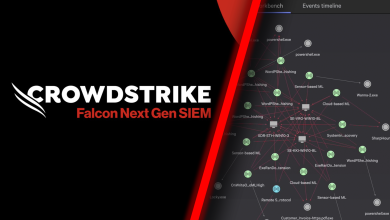Gigamon Study: Security Leaders Losing Ground in Cyber Race as Breaches Rise Unnoticed

Gigamon, a leader in deep observability, today published its 2024 Hybrid Cloud Security Survey, revealing that organisations around the world are still startlingly unprepared for modern, sophisticated cyber threats. The annual survey of over 1,000 Security and IT leaders across Australia, France, Germany, Singapore, the UK, and the USA, shows a decline in detection and response capabilities year-on-year compared to the company’s 2023 Hybrid Cloud Security Report. As hybrid cloud environments grow in complexity and bad actors launch a barrage of unseen attacks, 65% of global respondents believe that their existing solutions cannot effectively detect breaches. In Singapore, this concern rises to 71– ranking among the highest compared to other regions surveyed.
Security and IT leaders are at a crucial juncture. Some 83% of respondents believe that cloud complexity is increasing their cyber risk, and the spectre of AI-powered attacks looms globally. Eight in 10 respondents predict that AI will increase the global ransomware threat. And yet, despite global information security spending projected to reach $215 billion in 2024, only 54% of organisations feel “strongly prepared” to respond to unauthorised access in hybrid cloud environments.
Organisations Are Unprepared For Attacks
In Singapore, 78% of respondents have experienced a data breach in the past, surpassing the global average of 73%. Survey respondents also generally acknowledge weaknesses in their threat detection tools. Just 1 in 4 were able to remediate a live threat in a recent breach – while this rises to 30% in Germany, it falls to just one-fifth in Australia and Singapore.
When tooling fails, organisations suffer more serious consequences:
- 31% of organisations only detected a recent breach when they received an extortion threat from the
- 31% became aware only once proprietary information leaked into the dark This is much lower in France and the UK (around 1 in 5) but hits a concerning 42% among Australian respondents
- 25% of respondents failed to determine the root of the breach, increasing to one-third of Australian, Singaporean, and US respondents
Critical Visibility Gaps
Complex hybrid cloud infrastructure contributes to organisations’ lack of control. Despite 85%
describing cloud security as a boardroom priority, hybrid cloud visibility continues to be an issue.
- Three-quarters of respondents agree that East-West (lateral) visibility is more important to cloud security than North-South, yet just 40% have visibility into East-West traffic, down from 48% in 2023
- Lateral visibility is lowest in the UK (30%), while almost half report visibility in Australia and Singapore
- Encryption poses another serious blind spot: despite researchers suggesting that 93 %of malware attacks hide in encrypted traffic, a shocking 76 %of Gigamon respondents currently trust that encrypted traffic is secure
Deep Observability Is Viewed As Central To Modern IT Success
When breaches are missed, tool strategies are firmly in the spotlight. More than 80% agree that achieving unified visibility into hybrid cloud infrastructure – delivering network-derived intelligence to log-based security tooling – is key to preventing attacks. Six in 10 believe that greater visibility into all data in motion will empower them to securely deploy AI technology. As a result, 80% agree that deep observability is a board-level priority. When it comes to East-West (lateral) visibility, Singapore takes the lead, with 48% of respondents citing having such visibility, a significant increase from 30% the previous year.
“Cyber risk is firmly in the spotlight this year, with governments and boardrooms finally recognising its place at the very top of the business risk register. And yet cybercriminals are evading detection over a third of the time,” commented Mark Jow, EMEA Technical Evangelist at Gigamon. “Today’s MELT-based (Metrics, Events, Logs, and Traces) approaches are no longer enough, as organisations need 360-degree visibility across the hybrid cloud. Whether organisations are fending off AI-powered attacks, integrating AI-powered solutions into hybrid cloud environments, or seeking to establish Zero Trust, deep observability is fundamental to success.”
CISOs Bear the Brunt
The survey also delves into the insights of 234 CISOs globally. The results highlight that CISOs continue to bear the burden of regulatory and technological pressures, with 59% reporting that they would be most empowered by cyber risk becoming a board priority. Some 69% report they struggle to detect encrypted threats, compared to 59% of the total respondents, and an alarming seven in 10 CISOs believe their tools aren’t as effective as they could be in detecting breaches. Detection is not their only concern: three-quarters of CISOs report their security teams being overwhelmed by sprawling tool stacks, 11% higher than their C-Suite colleagues
“It is clear for CISOs that organisations’ tool stacks are falling short,” said Chaim Mazal, CSO at Gigamon. Security leaders are under pressure from governments to reduce cyber risk. But without a real-time, network-derived intelligence and insights into all data in motion, including East-West and encrypted traffic, bad actors will continue to wreak havoc, now with AI accelerating their efforts.”




